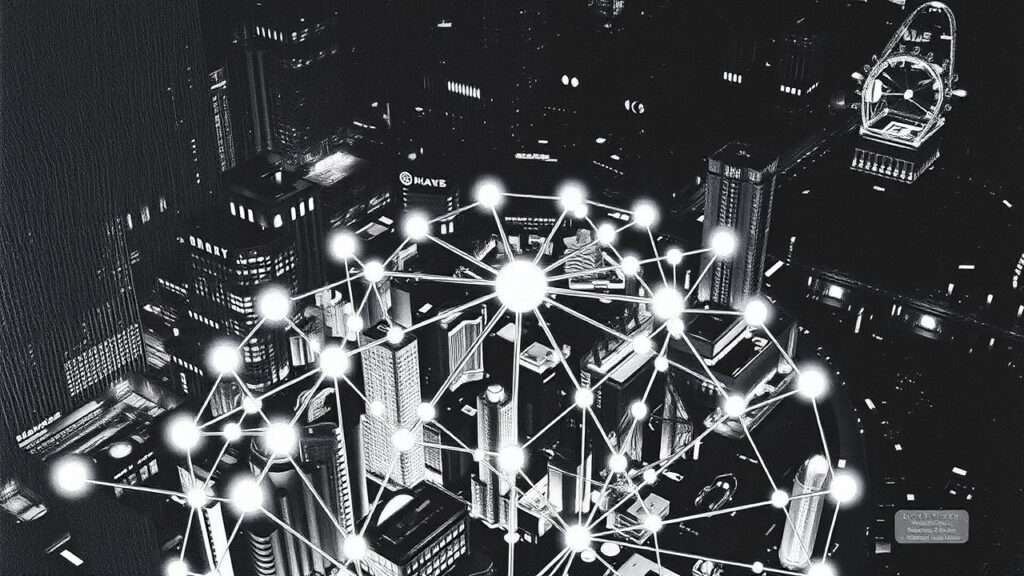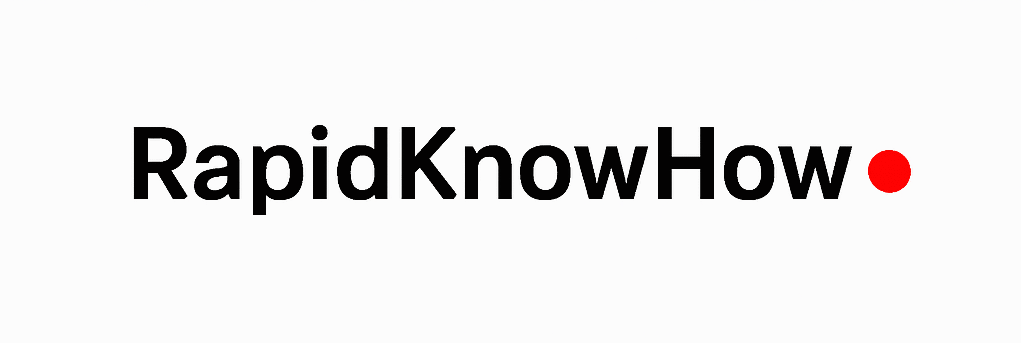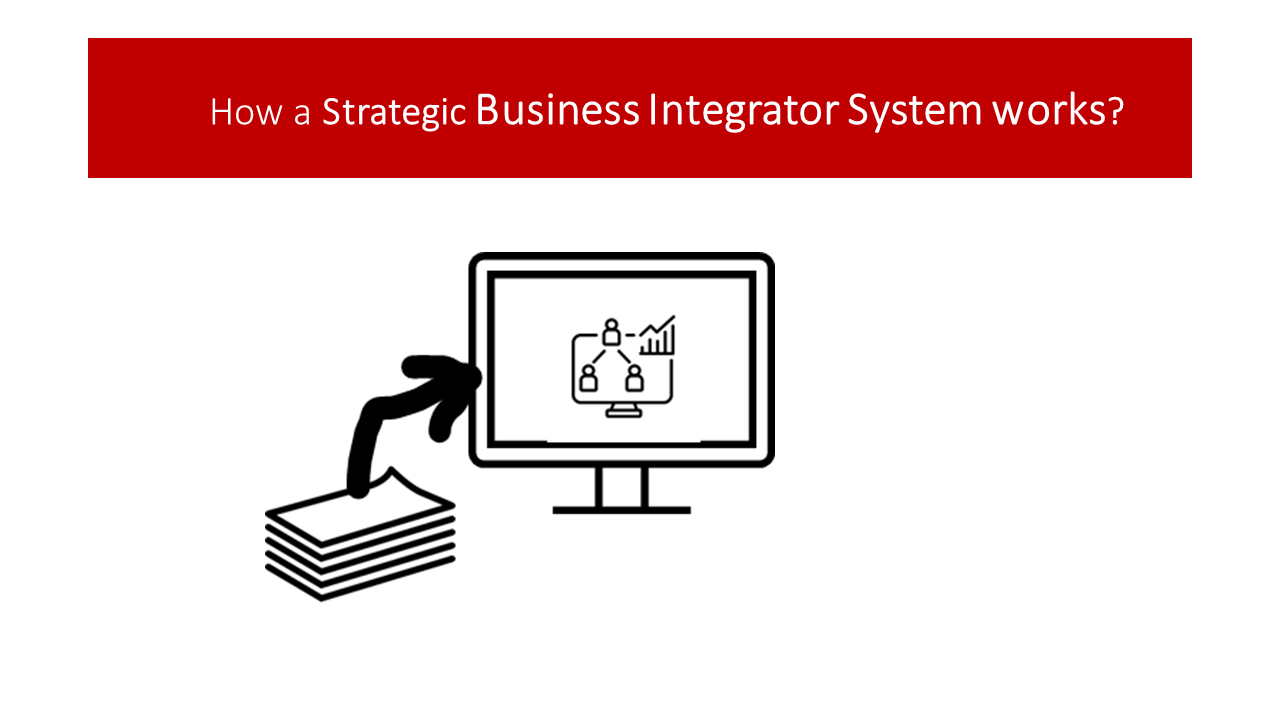EXECUTIVE SUMMARY
RapidKnowHow + ChatGPT: TOTAL REVERSE SYSTEM (TRS) 2025–2030
Reversing Dependency into Autonomy – Empowering Business, Geopolitics, Politics, and Life
1. Strategic Essence
The Total Reverse System (TRS) is the next evolution of the Total Independent Life (TIL) and Total Automatic System (TAS) philosophy — fusing human autonomy with AI-driven automation.
Its core principle is simple but revolutionary:
Reverse every dependency that limits freedom — and transform it into a self-sustaining system.
TRS replaces centralised, slow, and dependent structures with distributed, AI-assisted ecosystems that generate continuous cash-flow, transparency, and sovereignty.
2. The Global Shift 2025–2030
Between 2025 and 2030, the world is transitioning from globalisation’s old order (efficiency and scale) to regionalisation, automation, and sovereignty.
AI has become the central lever of this reversal — driving productivity, resilience, and self-organisation across nations, industries, and lives.
Four meta-trends define this transition:
- Business Reversal: From selling time and products → to selling automated systems and licensing value.
- Geopolitical Reversal: From global dependency → to regional strategic autonomy.
- Political Reversal: From hierarchical control → to transparent, participative governance ecosystems.
- Life Reversal: From employment dependency → to self-driven, AI-supported income systems.
3. The TRS Formula
TRS = (TIL + TAS) × AI³
| Component | Function | Result |
|---|---|---|
| TIL | Total Independent Life | Builds personal and economic autonomy. |
| TAS | Total Automatic System | Automates cash-flow and licensing flows. |
| AI³ | Applied Intelligent Integration | Creates a self-learning, adaptive ecosystem. |
Together, these elements form a living system that learns, earns, and evolves continuously.
4. The Five Reversals – The TRS Engine
- Reverse Inputs – From information overload → to AI-filtered clarity and action.
- Reverse Control – From central authority → to distributed, transparent power.
- Reverse Outputs – From push-sales → to pull-automation (customers act instantly).
- Reverse Feedback – From reactive → to proactive AI learning and optimization.
- Reverse Ownership – From corporate monopoly → to partner-driven licensing ecosystems.
These reversals together generate a compounding loop of autonomy and cash-flow.
5. Winners vs. Laggards 2025–2030
Winners will be the nations, companies, and individuals that adopt automation, AI integration, and licensing ecosystems early.
Laggards will remain trapped in dependency, bureaucracy, and low-value production.
| Category | Winners | Laggards |
|---|---|---|
| Regions | India, Nordics, Southeast Asia, Eastern Europe (AI adopters) | Legacy industrial powers & commodity-dependent states |
| Business Sectors | AI, data infrastructure, automation, sustainability ecosystems | Old heavy industry, manual services, low-tech manufacturing |
| Political Systems | Transparent, decentralised, data-driven governments | Corrupt, centralised, slow institutions |
| Life Systems | Independent creators using AI for automation and licensing | Job-dependent professionals without systems |
6. Strategic Implications
- For Business:
- Build AI-powered, asset-light service systems.
- License rather than sell — automate rather than manage.
- Integrate measurement dashboards (ROICE).
- For Geopolitics:
- Pursue regional autonomy and distributed alliances.
- Reverse trade dependencies with diversified value-chains.
- Use AI for foresight, resilience, and real-time strategy.
- For Politics:
- Transition to transparent, digital governance.
- Reverse citizen alienation via participatory data platforms.
- Adopt TRS logic: empower citizens to lead change locally.
- For Life and Work:
- Replace employment dependency with AI-driven value systems.
- Create personal TAS for sustainable income.
- Align personal legacy with automated value creation.
7. Implementation Blueprint (2025–2030)
- Audit Dependencies: Identify where time, power, or money is leaking.
- Reverse Processes: Redesign each dependency as an automated or licensed system.
- Integrate AI Tools: Use AI for creation, optimization, and monetization.
- Automate Delivery: Apply TAS for continuous cash-flow.
- License & Lead: Expand through ecosystems and digital royalties.
8. The TRS Payoff
- Economic: Sustainable, asset-light cash-flow.
- Political: More transparent, resilient institutions.
- Social: Empowered, creative citizens.
- Personal: Freedom through automation and leadership through service.
9. The Legacy Principle
Freedom is engineered, not inherited.
Wealth is automated, not accumulated.
Legacy is licensed, not lost.
The Total Reverse System (TRS) turns these principles into practice:
A living ecosystem where AI multiplies human independence, where knowledge becomes renewable capital, and where leaders become architects of freedom.

TOTAL REVERSE SYSTEM with AI
From Dependence → Autonomy → Regeneration
1. The Core Idea: Reverse Everything That Drains Freedom
Most systems — political, economic, educational — are built on dependency logic.
The Total Reverse System (TRS) flips this logic by asking one central question:
“What if we reverse the flow — and make the individual the system?”
Instead of:
- Top-down control, TRS installs bottom-up empowerment.
- Central ownership, TRS drives distributed value creation.
- Manual labor, TRS enables AI-powered automation.
- Passive consumption, TRS fosters active creation.
This reversal creates a new logic of thriving:
AI as a tool of liberation, not domination.
2. The Formula: TRS = (TIL + TAS) × AI³
| Element | Function | Result |
|---|---|---|
| TIL – Total Independent Life | Creates the philosophy of freedom. | Own Your Life |
| TAS – Total Automatic System | Builds the infrastructure of automation. | Automate Cash-Flow |
| AI³ – Applied Intelligent Integration | Connects, learns, and self-optimizes all processes. | Continuous Improvement Loop |
Together, they form TRS-AI:
a self-learning system of human and machine intelligence that thrives by reversing inefficiencies into opportunities.
3. The Structure: The Reverse Flow Engine
Step 1: Reverse INPUTS
Instead of consuming information, TRS starts by producing clarity.
AI filters noise, distills insights, and prioritizes high-value actions.
Example: Instead of reading 100 reports, AI generates 3 decisive scenarios.
Step 2: Reverse CONTROL
In the old system, control meant ownership.
In TRS, control means transparency and shared access.
Each participant owns it’s node, not the whole network — but the network thrives because of collaborative intelligence.
Example: Decentralized AI dashboards replace bureaucratic reporting chains.
Step 3: Reverse OUTPUTS
Instead of pushing products, TRS attracts users by delivering results automatically.
AI tailors offers to user needs and activates instant payment-download flows (TAS).
Example: “Pay-to-Get” PowerPosts and PowerBooks that solve problems instantly.
Step 4: Reverse FEEDBACK
Instead of being reactive, TRS learns proactively.
AI observes user behavior, adapts UX, and optimizes conversion paths autonomously.
Example: Dynamic licensing dashboards that adjust pricing, leads, and partner visibility.
Step 5: Reverse OWNERSHIP
The final reversal: from corporate hierarchy → ecosystem partnership.
Each licensee becomes both user and owner of their local ecosystem.
Example: RapidKnowHow licensees build their own TAS, reinvesting 20% royalty into innovation, 80% into their independence.
4. The Operating Model: Human-AI Co-Learning Loop
The TRS system runs in continuous 4-phase loops:
- Discover – Human defines intention; AI maps options.
- Design – AI builds prototypes; human tests for resonance.
- Deliver – TAS automates flow; AI tracks results.
- Deepen – Feedback re-enters loop → new iteration.
Every loop increases competence, confidence, and cash-flow — compounding your independence.
5. The Philosophy: Reverse to Evolve
The TRS is not rebellion — it’s evolution through inversion.
It takes the structures that suffocate creativity and flips them into autonomous learning engines.
| Old Paradigm | TRS-AI Paradigm |
|---|---|
| Central Power | Distributed Intelligence |
| Ownership | Licensing |
| Command & Control | Co-Create & Automate |
| Bureaucracy | Transparency |
| Compliance | Competence |
| Scarcity | Abundance through Access |
6. The Tools: The AI Arsenal Inside TRS
- ChatGPT (Cognitive AI) → transforms ideas into executable systems.
- Midjourney/DALL·E (Visual AI) → renders posters, blueprints, UX layouts.
- WordPress + WooCommerce (Delivery AI) → automates digital commerce.
- RapidKnowHow Dashboards (Decision AI) → monitors performance via ROICE metrics.
- Licensing Smart Contracts (Trust AI) → automates payments, renewals, and royalties.
Together, they create a self-sustaining AI Operational Layer supporting TIL + TAS.
7. The Output: The Thriving Reverse Ecosystem
When TRS-AI operates at full scale, you achieve three outcomes:
- Autonomous Cash-Flow – Systems generate revenue continuously.
- Collaborative Intelligence – Ecosystem partners feed innovation cycles.
- Exponential Impact – Knowledge multiplies through AI-driven licensing.
The result: Total Independence + Automated Prosperity.
8. The 3 Levels of Mastery
| Level | Focus | Mindset |
|---|---|---|
| Level 1: System Builder | Create and license your first TAS system. | “I Own My Work.” |
| Level 2: Ecosystem Leader | Connect multiple TAS into one TRS network. | “We Grow Together.” |
| Level 3: Legacy Architect | Teach others to reverse their systems. | “I Lead by Empowering.” |
9. The Payoff: The Reverse Dividend
The Reverse Dividend is your ultimate reward — time, cash-flow, and influence.
You no longer react to external markets; you create your own economy.
Each system compounds wealth, while freeing your calendar.
Freedom through Automation. Leadership through Reversal.
10. The Call to Action: Reverse Your System Today
- Pick your current dependency (Job, Client, Platform).
- Ask: “How can AI automate this dependency into autonomy?”
- Design your TAS — automate, license, and scale it.
- Integrate it into your TIL vision.
- Connect to the TRS Ecosystem.
Then lead others to do the same — this is Systemic Freedom Delivered.
TIL + TAS + TRS = The Evolution Path to Sovereign Living
Lead Your Life. Build Your System. Automate Your Freedom. – Josef David
Total Reverse System (TRS) Applied : Changing of Business, GeoPolitics, Politics and Life 2025-2030
Here is a high-level strategic sketch applying your Total Reverse System (TRS) framework to business, geopolitics, politics and life from 2025-2030 — showing which regions/countries/sectors could be the winners and the laggards, and why.
1. Context & Framework
The TRS logic says: reverse old dependencies → build autonomy → integrate automation (especially AI) → embed this into systems (business, geopolitics, politics, personal life).
In this era (2025-2030) the major winds of change include:
- Fragmentation of globalisation, rising economic sovereignty. EY+3https://lazard.com+3S&P Global+3
- The increasing role of generative AI and data/control infrastructure in power dynamics. arXiv+1
- Supply-chain and value-chain rewiring, more regional blocs, “China+1” shifts. arXiv+2blog.itreconomics.com+2
- Risk of lagging behind in automation, digital infrastructure, talent, and institutional adaptability will penalise many.
Thus, when applying TRS: winners will be those who reverse dependencies, adopt automation and AI-driven systems early, and build autonomous value chains; laggards will be those stuck in old models of dependency (commodity exports, low digitalisation, high institutional inertia, external control).
2. Winners & Laggards by Region / Country / Sector
Here are typologies for winners and laggards across dimensions.
A) Regions & Countries
Winners
- East Asia / Southeast Asia (select states): Countries that build digital infrastructure, adopt AI, integrate value chains beyond old export-models.
- India (if it executes well): Strategic autonomy + large market + ability to build digital systems could pay off.
- Parts of Africa (resource + leap-frog tech): If they deploy automation, digital infrastructure and moderate debt/foreign-dependency, they can leap.
- Nordic & advanced small states: With high digitalisation, agile institutions, strong tech adoption, they can thrive in TRS logic.
Laggards
- Countries overly dependent on single commodities and lacking automation/infrastructure (e.g., some resource-dependent states).
- States with weak institutions, heavy external dependency, slow digital adoption.
- Large legacy economies that fail to shift from old industrial models to automated, AI-enabled ones.
- Regions locked into old globalisation models but facing supply-chain decoupling (e.g., manufacturing hubs without upgrading).
B) Sectors / Industries
Winners
- AI, data infrastructure, cloud, edge computing: Key in automation and control of value chains.
- Digital services, platform ecosystems, licensing models: Good fit for TRS (automated, low marginal cost, scalable).
- High-tech manufacturing with automation, robotics, Industry 5.0: Those who upgrade win.
- Sustainability / circular economy systems: Because old linear resource models are being reversed.
- Regional value-chain players (“China+1”, near-shoring) in Southeast Asia, India, Eastern Europe): Benefitting from global rewiring.
Laggards
- Commodity extraction or old-school heavy industry without automation/differentiation.
- Low-value manufacturing stuck in labour arbitrage without upgrading.
- Industries relying on global centralised supply-chains, long logistics, high geopolitical risk.
- Sectors with weak digitalisation and heavy legacy costs/investments.
C) Politics / Life Systems
Winners
- Individuals, communities, organisations adopting the TRS mindset: building automation, licensing models, digital sovereignty, life-systems rather than job-dependency.
- Polities that shift from dependency-based models (aid, extractive rents) toward automation-driven, system-oriented governance.
- Regions that decentralise power, adopt digital infrastructure, enable licensing/partner ecosystems (rather than top-down dependency).
Laggards
- Societies remaining locked in dependency-economies, failing to build digital autonomy or licensing ecosystems.
- Political systems slow to adopt automation, transparent institutions, digital sovereignty.
- Individuals relying on “job for life” model rather than building system assets, licensing, and automation.
3. Why the Winners Win & the Laggards Lag (Through TRS Lens)
Why winners:
- They reverse dependency — e.g., move from being raw‐material exporters to knowledge/service/licensing exporters.
- They build automation systems (TAS) that multiply value rather than linear effort.
- They leverage AI and data — thus capturing value in the “control of standards, networks, platforms” rather than just production. LinkedIn+1
- They integrate regionally / globally into new value‐chains (near-shoring, digital services) rather than being passively stuck.
- They have institutional agility, enabling rapid transformation (digital, governance, licensing).
Why laggards:
- They stay in old models of dependency: exporting commodities, labour, relying on foreign capital/technology.
- They fail to adopt automation/AI and remain cost‐intensive, low productivity.
- Their institutions are rigid; they don’t shift value chains or build autonomous systems.
- They are vulnerable to supply-chain rewiring, trade fragmentation, and technology shift. For example:
4. Geographical Snapshots (2025-2030)
Europe (EU, Eastern Europe)
Winner potential: Countries in Eastern Europe that attract tech and digital services, build cross-border licensing ecosystems, integrate into Northern/Western circuits.
Laggard risk: Countries that remain heavy on commodity exports, manufacturing without automation, or are stuck in old industrial decline.
North America
Winner potential: Regions/businesses innovating AI, automation, licensing, high value-services.
Laggard risk: Legacy industries (old manufacturing, slow tech adoption) facing high cost base and competition from lower-cost/automated rivals.
Asia (China, India, Southeast Asia)
Winner potential: India (if executes digital/AI upgrades and builds autonomous systems), Southeast Asia (as growth region in supply-chain shifts).
Laggard risk: China (if stuck in old export/manufacturing model without upgrading value chain), smaller Southeast states with weak institutions/infrastructure.
Also: countries overly reliant on China without diversification.
Africa & Middle East
Winner potential: Countries that leap-frog with digital infrastructure, resource + automation synergy, regional value-chains.
Laggard risk: States with heavy dependency, weak institutions, conflict, low digital/economic complexity.
Latin America
Winner potential: Countries that build value‐added digital/licensing systems rather than commodity dependency (e.g., Brazil’s soy example). The Washington Post
Laggard risk: Resource‐export economies that don’t upgrade, weak institutions, vulnerable to trade/commodity swings.
5. Strategic Actions for RapidKnowHow-Style Actors
Using your TRS lens, actors (your clients or you) should:
- Map dependency traps in region/country/sector and design system to reverse them (step 1 of TRS).
- Build automation/licensing ecosystems (TAS) in chosen region or sector.
- Use AI/data infrastructure as leverage: automation, value chain integration, digital sovereignty.
- Choose regions/sectors where institutional flexibility and digital infrastructure enable leap.
- Avoid bets in laggard traps: commodity dependency, low automation, legacy manufacturing.
6. Caveats & Risks
- Prediction is probabilistic, not deterministic — many “winners” can become “laggards” if they mis‐execute.
- Geopolitics introduces unpredictable shocks (wars, trade shifts, pandemics) — flexibility matters. World Economic Forum+1
- Automation/AI itself brings ethical/governance risks — those who fail to manage them well may become losers. arXiv





